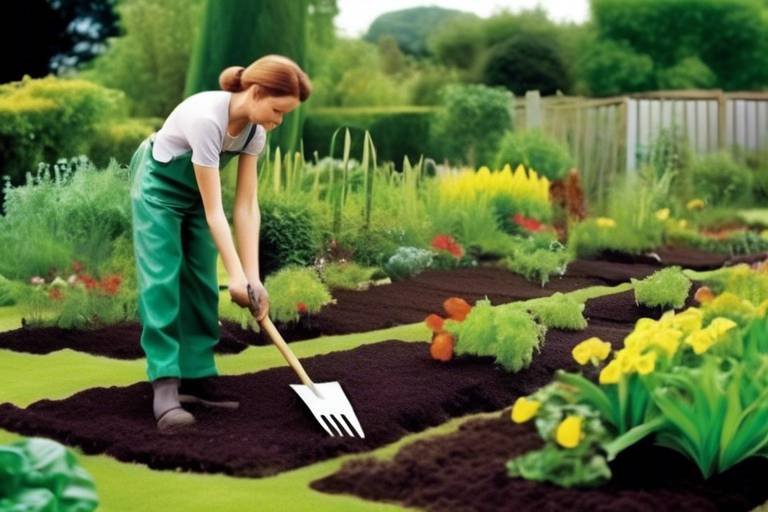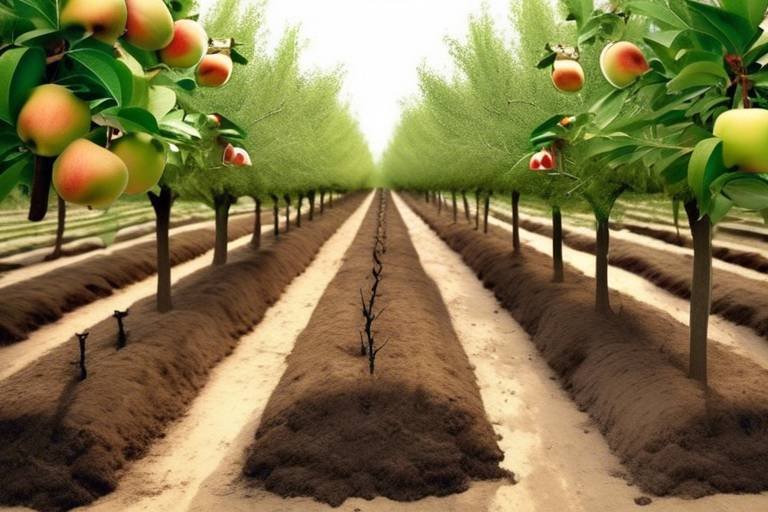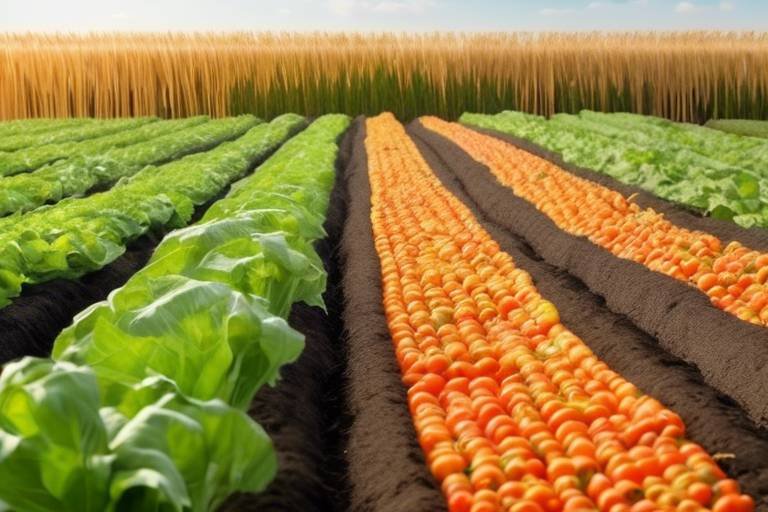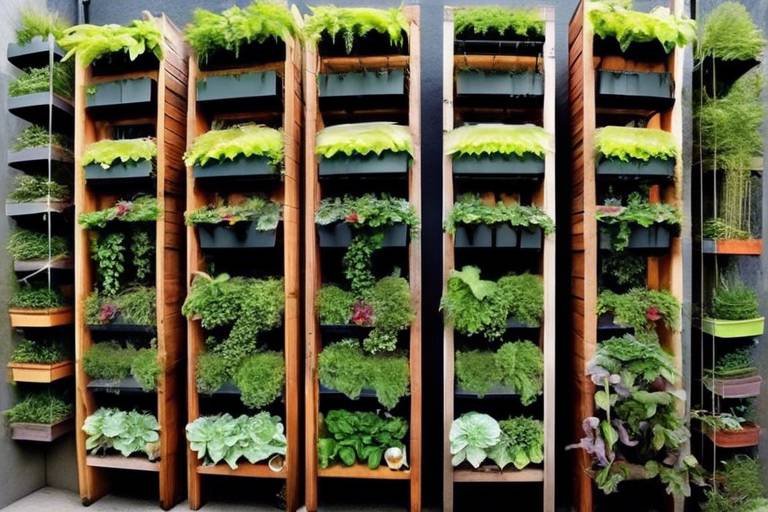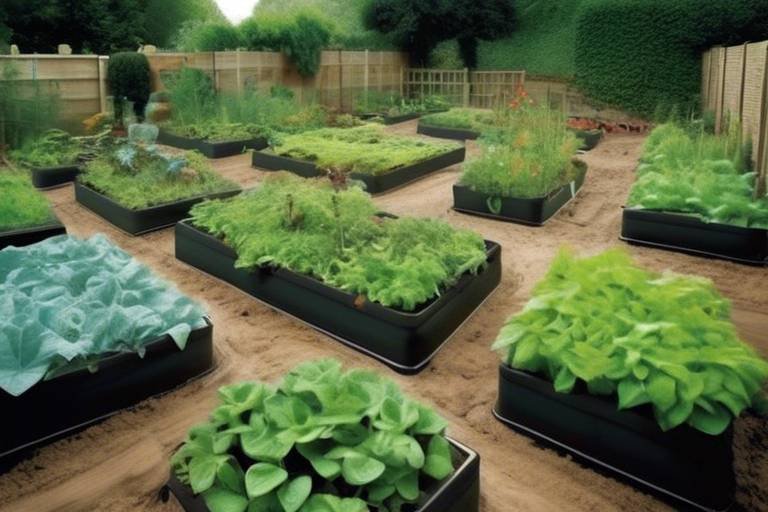Using Cover Crops for Eco-Friendly Soil Management
In a world where sustainable agriculture is becoming increasingly essential, the concept of using cover crops stands out as a beacon of hope for eco-friendly soil management. Cover crops are not just a trend; they are a vital practice that can rejuvenate our soils, enhance agricultural productivity, and promote a healthier environment. Imagine your soil as a living organism, constantly in need of care and nourishment. Just like a garden needs flowers to thrive, our agricultural lands require cover crops to maintain their vitality. By integrating these crops into farming practices, we can create a harmonious balance that benefits both the earth and our food systems.
So, what exactly are cover crops? These are crops that are planted during the off-season when the main crops are not growing. They serve multiple purposes, such as preventing soil erosion, improving soil structure, and enhancing nutrient cycling. Think of them as nature's way of dressing the soil in a protective layer, shielding it from the harsh elements while also enriching it. The benefits of cover crops extend beyond just soil health; they also play a crucial role in promoting biodiversity and creating a more resilient agricultural ecosystem.
One of the most significant advantages of cover crops is their ability to improve soil structure. When you plant cover crops, their roots penetrate deep into the soil, creating channels that allow air and water to flow more freely. This is akin to opening up a clogged drain, making it easier for nutrients and moisture to reach the crops that will grow in the following season. Additionally, cover crops can enhance nutrient cycling by capturing and storing nutrients that would otherwise be lost to leaching. This means less reliance on synthetic fertilizers, which can have harmful effects on the environment.
Moreover, cover crops can suppress weeds naturally, reducing the need for chemical herbicides. By outcompeting weeds for resources, cover crops act as a natural barrier, leading to healthier ecosystems. The benefits are not just limited to the soil; they extend to the surrounding environment, promoting a more sustainable approach to farming that respects the intricate balance of nature.
In summary, using cover crops for eco-friendly soil management is not just a good practice; it is a necessary step towards sustainable agriculture. These crops offer a multitude of benefits that can transform the way we approach farming, making it possible to produce food while also caring for our planet. As we delve deeper into the types of cover crops and best practices for their management, we will uncover the specific ways in which these plants can help us achieve our agricultural goals while minimizing our environmental impact.
- What are cover crops? Cover crops are plants grown during the off-season to improve soil health, prevent erosion, and enhance nutrient cycling.
- How do cover crops benefit soil health? They improve soil structure, enhance nutrient retention, and suppress weeds, leading to healthier ecosystems.
- What types of cover crops are available? Common types include legumes, grasses, and brassicas, each offering unique benefits.
- How do I choose the right cover crop for my farm? Consider factors like soil type, climate, and your main crops in rotation to select the most suitable cover crop.
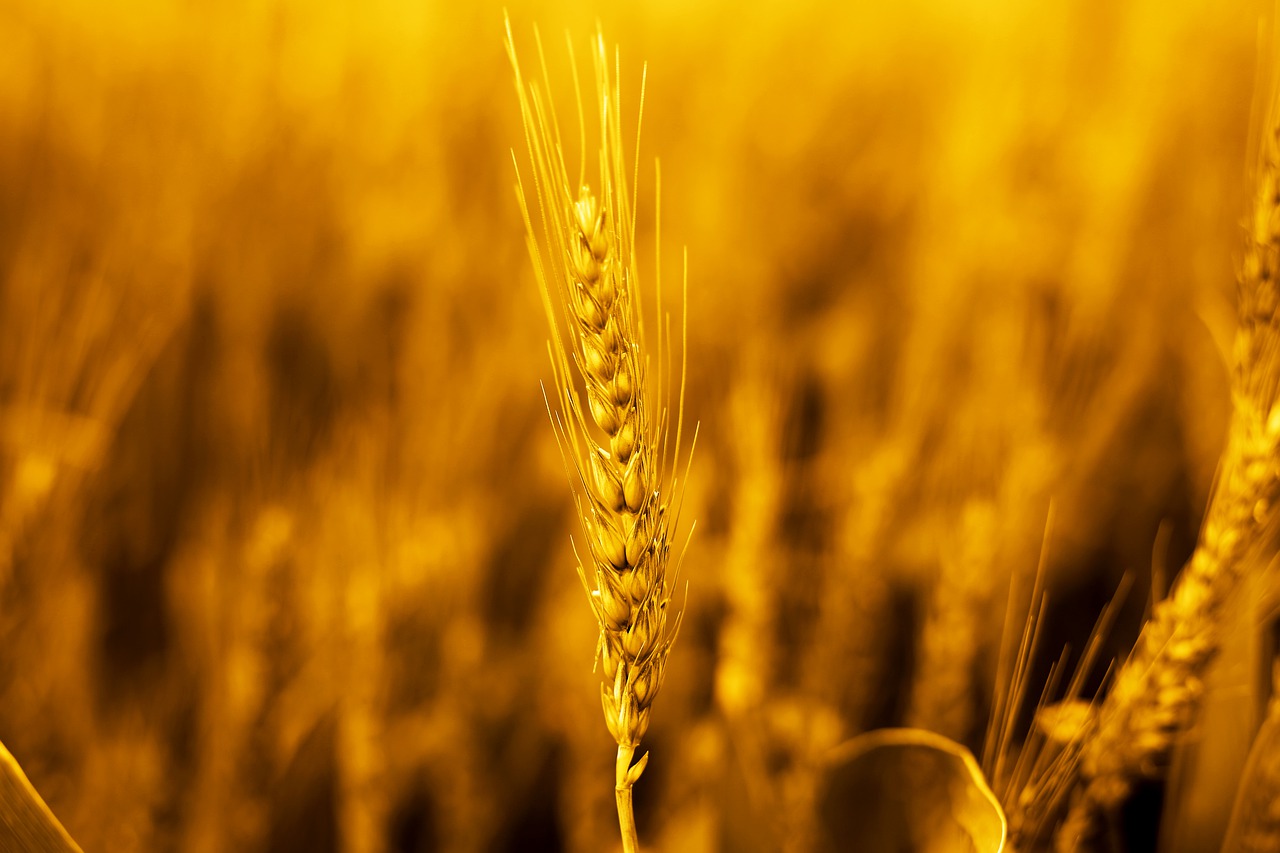
Benefits of Cover Crops
This article explores the benefits, types, and best practices of using cover crops to enhance soil health, promote sustainability, and improve agricultural productivity while minimizing environmental impact.
Cover crops are like the superheroes of sustainable agriculture, swooping in to save the day with a plethora of benefits that can transform soil health and agricultural practices. One of the primary advantages of using cover crops is their ability to improve soil structure. When these crops grow, their roots penetrate the soil, creating channels that enhance aeration and water infiltration. This is crucial because well-structured soil can hold more moisture and nutrients, which directly benefits the main crops grown in the area.
Another fantastic perk of cover crops is their role in nutrient cycling. They can capture excess nutrients that might otherwise leach away, particularly nitrogen and phosphorus. By doing so, cover crops act as a buffer, reducing nutrient runoff into nearby water bodies and thus minimizing environmental pollution. It’s like having a personal nutrient bank that keeps your soil rich and healthy!
Moreover, cover crops are champions at reducing erosion. Their dense foliage protects the soil from heavy rains and wind, which can wash away precious topsoil. This is especially important in hilly or sloped regions where soil erosion can be a significant issue. Additionally, the biomass produced by cover crops can be incorporated back into the soil, further enhancing its organic matter content.
But wait, there’s more! Cover crops also promote biodiversity. By planting a variety of cover crops, farmers can create habitats for beneficial insects and microorganisms. This biodiversity not only supports a healthier ecosystem but also helps in controlling pests naturally. Think of it as a natural pest management system that works in harmony with your crops.
Furthermore, cover crops can effectively suppress weeds. Their rapid growth can outcompete weeds for sunlight and nutrients, reducing the need for chemical herbicides. This not only saves money but also contributes to a healthier environment by minimizing chemical inputs.
In summary, the benefits of cover crops are numerous and significant. By improving soil structure, enhancing nutrient cycling, reducing erosion, promoting biodiversity, and suppressing weeds, cover crops pave the way for healthier ecosystems and more productive agricultural practices. So, if you’re looking to boost your soil health and sustainability efforts, cover crops might just be the answer you’ve been searching for!
- What are cover crops? Cover crops are plants grown primarily to improve soil health, prevent erosion, and enhance nutrient cycling rather than for harvest.
- How do cover crops improve soil health? They enhance soil structure, increase organic matter, and promote beneficial microbial activity.
- Can cover crops help with weed management? Yes, by outcompeting weeds for resources, cover crops can significantly reduce weed pressure.
- What types of cover crops should I choose? The choice depends on your specific soil health goals, climate, and the main crops in your rotation. Common options include legumes, grasses, and brassicas.
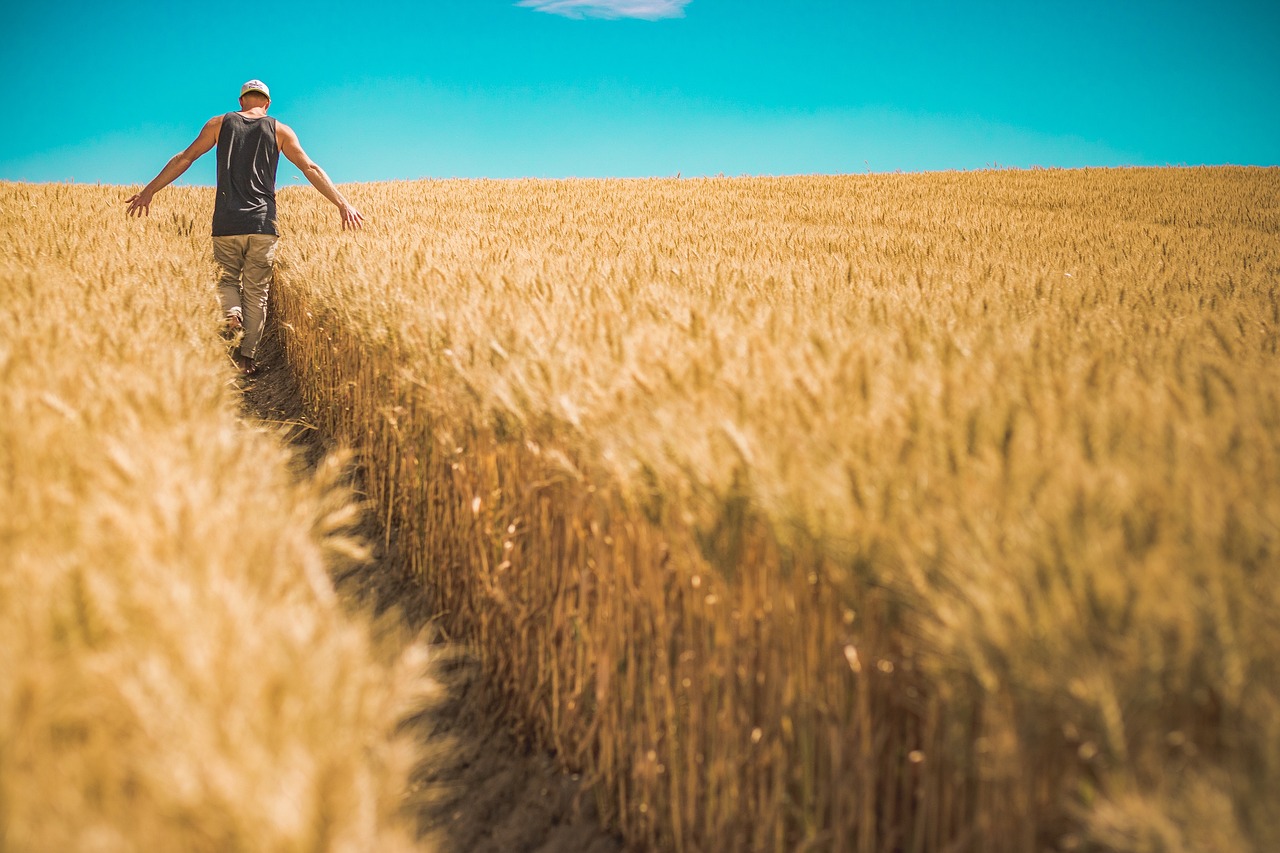
Types of Cover Crops
When it comes to enhancing soil health, choosing the right cover crops is like picking the perfect ingredients for a delicious recipe. Each type of cover crop offers unique benefits tailored to specific soil health goals and local climate conditions. Understanding these types can help farmers and gardeners alike make informed decisions that lead to thriving ecosystems and productive agricultural practices. Let’s dive into some of the most common types of cover crops, including legumes, grasses, and brassicas.
Legumes are often considered the champions of soil enhancement. Crops like clover and vetch are not just pretty faces; they possess the remarkable ability to fix nitrogen in the soil. This means they can convert atmospheric nitrogen into a form that plants can use, thereby enhancing fertility and reducing the need for synthetic fertilizers. By incorporating legumes into your crop rotation, you’re not only boosting soil health but also contributing to a more sustainable agricultural system.
But that’s just the tip of the iceberg! Legumes also improve soil structure and increase organic matter, which leads to better water retention. Imagine your soil as a sponge; the more organic matter it contains, the more water it can soak up. This is particularly beneficial during dry spells, helping your crops thrive when they need it most. When choosing the right legume, consider factors such as soil type, climate, and the main crops in rotation to ensure maximum compatibility and benefits.
Next up, we have grasses, such as rye and oats. These cover crops are like the guardians of your soil. They provide excellent ground cover, preventing erosion and suppressing weeds. Think of them as a protective blanket for your soil, keeping it safe from the elements and invasive species. When grasses are incorporated back into the soil, they contribute to soil organic matter, further enhancing soil structure and fertility.
Finally, let’s not forget about brassicas. These cover crops, which include species like radishes and turnips, are known for their deep taproots that can break up compacted soil layers. This is particularly useful in fields that have seen heavy machinery or overuse. Brassicas also contribute to nutrient cycling, helping to release nutrients that may be locked away in the soil. By incorporating a diverse range of cover crops, including brassicas, you’re promoting biodiversity, which is crucial for a healthy ecosystem.
In summary, the world of cover crops is rich and varied. Each type plays a vital role in enhancing soil health and promoting sustainability. Whether you opt for legumes, grasses, or brassicas, the key is to understand the specific benefits they offer and how they can fit into your overall agricultural strategy. By doing so, you’re not just investing in your current crops but also in the health of the soil for generations to come.
Here are some common questions regarding cover crops that might help clarify any doubts:
- What are cover crops? Cover crops are plants grown primarily to manage soil erosion, improve soil health, and enhance biodiversity rather than for harvest.
- How do cover crops improve soil health? They improve soil structure, increase organic matter, enhance nutrient cycling, and prevent erosion.
- Can I use cover crops in my garden? Absolutely! Cover crops can be beneficial in gardens to improve soil health and suppress weeds.
- What is the best time to plant cover crops? The timing can vary based on your location and climate, but generally, cover crops are planted in the fall after the main crop harvest.

Legumes
Leguminous cover crops, such as clover and vetch, play a critical role in sustainable agriculture by enhancing soil fertility through a remarkable process known as nitrogen fixation. This natural phenomenon allows legumes to convert atmospheric nitrogen into a form that plants can utilize, effectively enriching the soil without the need for synthetic fertilizers. Imagine your garden as a hungry child; legumes are like the nutritious meals that not only satisfy immediate hunger but also promote long-term health. By incorporating these crops into your rotation, you're not just feeding the soil; you're cultivating a thriving ecosystem.
But the benefits of legumes extend far beyond just nitrogen fixation. They also improve soil structure, which is essential for water infiltration and root penetration. When you plant legumes, their roots dig deep into the soil, creating channels that allow water to flow more freely. This is akin to how a well-planned highway system can ease traffic congestion—good soil structure alleviates water runoff and enhances moisture retention. Additionally, as legumes decompose, they contribute organic matter to the soil, which boosts its overall health and fertility.
Moreover, legumes can act as a natural weed suppressor. Their dense growth habit shades the soil, making it difficult for weeds to establish themselves. Think of legumes as a protective blanket that keeps the soil cozy while keeping pesky weeds at bay. This not only leads to healthier crops but also reduces the need for herbicides, making your farming practices more eco-friendly.
When it comes to selecting the right legume for your specific needs, several factors come into play. Soil type, climate, and the primary crops in your rotation are all crucial considerations. For instance, if you have sandy soil, you might opt for hairy vetch, which thrives in such conditions, whereas red clover could be more suitable for clay-heavy soils. By choosing the appropriate legume, you're ensuring that you reap maximum benefits while maintaining compatibility with your existing agricultural practices.
In summary, legumes are not just a mere addition to your field; they are a powerhouse of benefits that enhance soil health, promote sustainability, and improve agricultural productivity. By incorporating them into your crop rotation, you're investing in a more resilient and productive farming system. So, why not embrace the power of legumes and watch your soil—and your crops—thrive?
- What are cover crops? Cover crops are plants grown primarily to improve soil health, prevent erosion, and suppress weeds rather than for harvest.
- How do legumes improve soil fertility? Legumes fix atmospheric nitrogen in the soil, making it available for other plants, which enhances soil fertility.
- Can I plant legumes in all types of soil? While legumes are versatile, some species thrive better in specific soil types, so it's essential to choose the right one based on your soil conditions.
- When should I plant cover crops? The timing of planting cover crops depends on your local climate and the main crops in your rotation, but they are typically planted in the fall or early spring.
- How do I terminate cover crops? Effective termination methods include mowing, rolling, or incorporating them into the soil to prepare for the next planting season.
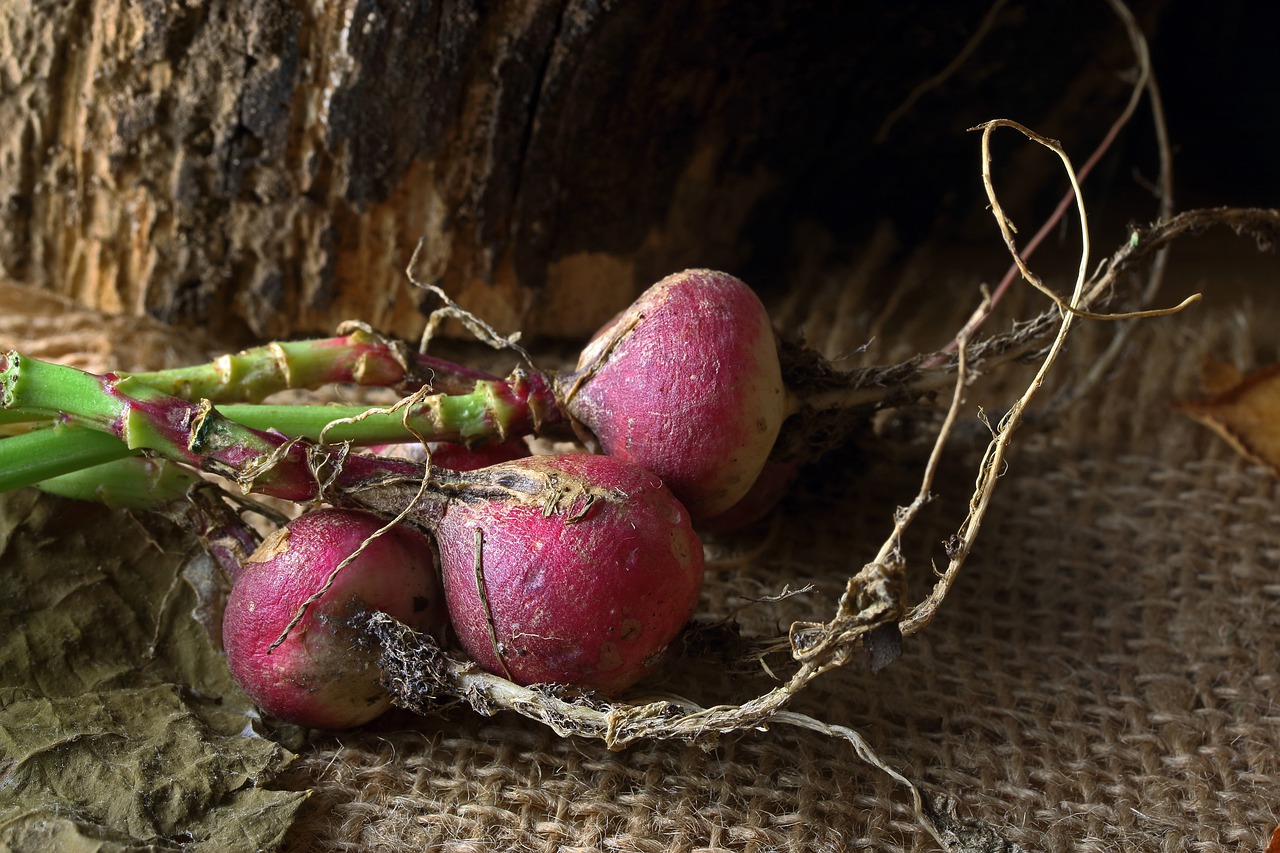
Benefits of Legumes
When it comes to enhancing soil health, leguminous cover crops are like the superheroes of the agricultural world. They not only play a crucial role in fixing nitrogen but also bring a host of other benefits that can transform your soil into a thriving ecosystem. Imagine your soil as a sponge; legumes help it soak up nutrients and water more effectively. This is particularly important in areas prone to drought or nutrient depletion.
One of the standout features of legumes is their ability to fix atmospheric nitrogen into a form that plants can readily use. This natural process reduces the need for synthetic fertilizers, which can be both costly and harmful to the environment. By incorporating legumes into your crop rotation, you can significantly enhance soil fertility and promote a healthier growing environment for your main crops.
In addition to nitrogen fixation, legumes contribute to improved soil structure. Their roots penetrate deep into the soil, breaking up compacted layers and creating channels for air and water to flow. This not only enhances water retention but also promotes the activity of beneficial organisms like earthworms, which further enrich the soil. Think of legumes as nature's way of aerating your garden!
Here are some key benefits of using legumes as cover crops:
- Nitrogen Fixation: They convert atmospheric nitrogen into a usable form, enriching the soil.
- Improved Soil Structure: Their root systems help break up compacted soil, enhancing drainage and aeration.
- Increased Organic Matter: When legumes decompose, they add valuable organic material to the soil.
- Weed Suppression: A dense cover of legumes can outcompete weeds for sunlight and nutrients.
Choosing the right legume for your specific conditions can maximize these benefits. Factors such as soil type, climate, and the main crops in your rotation all play a role in determining the best leguminous cover crop for your needs. For instance, red clover thrives in cooler climates, while cowpeas are better suited for warmer regions. By making informed choices, you can create a sustainable farming system that not only meets your agricultural goals but also supports the environment.
In conclusion, integrating legumes into your soil management practices can yield impressive benefits. They not only enhance soil fertility and structure but also promote biodiversity and help suppress weeds. By harnessing the power of legumes, you’re not just improving your crop yields; you’re investing in a more sustainable and eco-friendly agricultural future.
Q1: How do legumes fix nitrogen in the soil?
A1: Legumes have a symbiotic relationship with nitrogen-fixing bacteria that live in their root nodules. These bacteria convert atmospheric nitrogen into ammonia, which the plants can then use for growth.
Q2: Can legumes be used as a cover crop in any climate?
A2: While many legumes are adaptable, the best choice depends on local climate conditions. Some legumes thrive in cooler climates, while others prefer warm temperatures. It's important to select a legume that matches your specific environment.
Q3: What are some common legumes used as cover crops?
A3: Common leguminous cover crops include clover, vetch, and peas. Each has unique benefits and can be chosen based on your soil health goals.
Q4: How do I incorporate legumes into my crop rotation?
A4: You can plant legumes during the off-season or as a companion crop. After their growth cycle, till them into the soil to enhance fertility and structure.
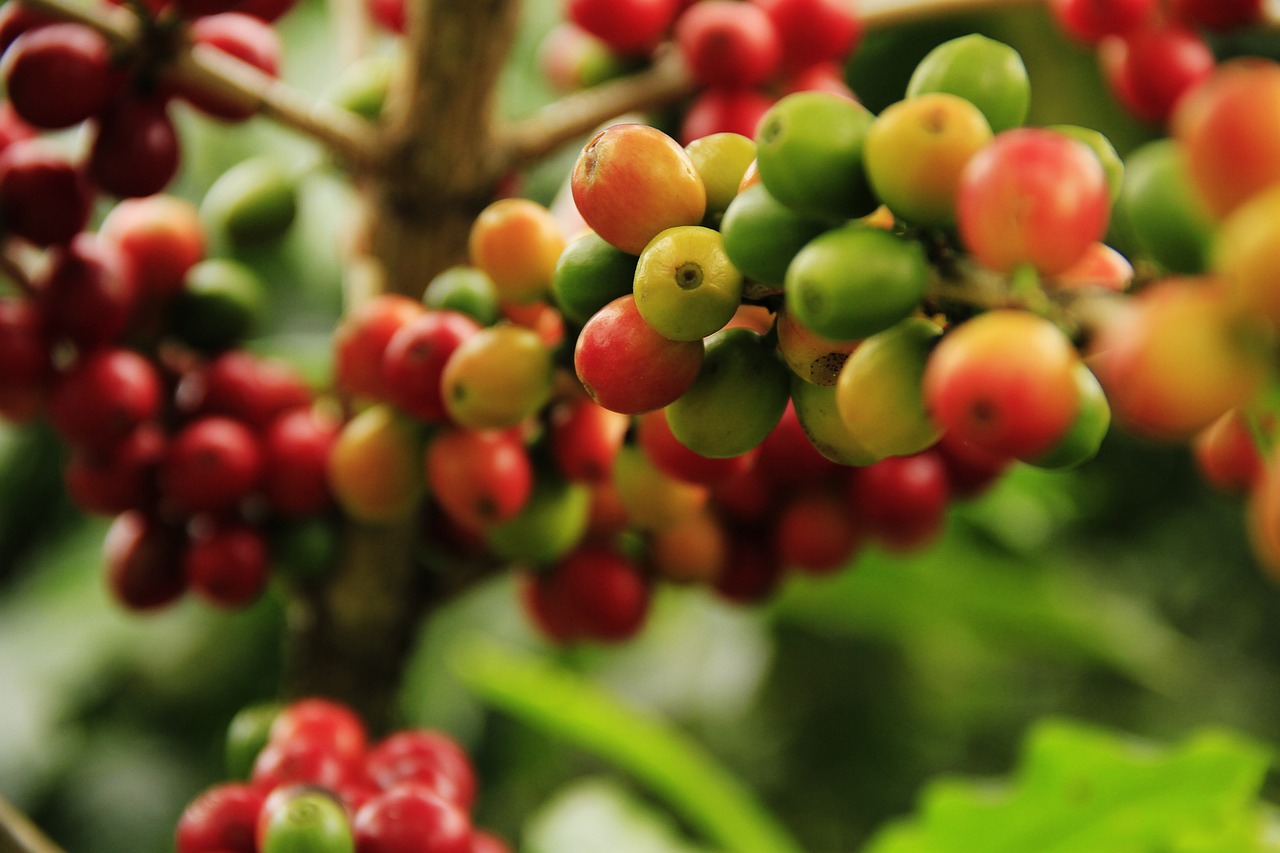
Choosing the Right Legume
When it comes to selecting the right legume for your cover cropping needs, it’s not just a matter of picking the first one you see. You need to consider a variety of factors that can significantly impact the effectiveness of your choice. Think of it like dating; you wouldn't just settle for anyone without considering compatibility, right? In the same way, understanding your soil type, climate, and the crops you plan to rotate can help you find the perfect legume match.
First and foremost, soil type plays a crucial role. Different legumes thrive in different soil conditions. For instance, if your soil is sandy, you might want to consider planting crimson clover, which is known for its adaptability. On the other hand, if you have heavier clay soils, hairy vetch could be more beneficial due to its deep-rooting nature, which helps break up compacted soil. This is important because the right legume can enhance soil structure and improve drainage, leading to healthier crops in the long run.
Next, let’s talk about climate. Are you in a region that experiences harsh winters or mild temperatures? This will influence your choice as well. For example, winter peas are excellent for cooler climates, while soybeans are more suited for warmer areas. Additionally, consider the growing season duration in your area. Some legumes, like field peas, have a shorter growing season and can be planted early, while others may need more time to establish before the main crop is sown.
Furthermore, you should also think about the main crops in your rotation. The legume you choose should complement these crops. For instance, if you frequently grow corn, incorporating a legume like hairy vetch can provide the nitrogen boost that corn craves. This not only improves your soil fertility but also reduces your dependence on synthetic fertilizers, making your farming practices more sustainable.
To help you visualize the various factors to consider, here's a simple table summarizing some popular legumes and their ideal conditions:
| Legume Type | Soil Type | Climate Suitability | Main Crop Compatibility |
|---|---|---|---|
| Crimson Clover | Sandy | Mild to Cool | Good with Corn and Soybeans |
| Hairy Vetch | Clay | Cool | Excellent with Corn |
| Winter Peas | Loamy | Cool | Compatible with Barley |
| Field Peas | Various | Mild | Good with Wheat |
| Soybeans | Loamy | Warm | Compatible with Corn |
In conclusion, choosing the right legume is about more than just picking a seed; it’s about understanding the unique characteristics of your farm. By considering your soil type, climate, and main crops, you can select a legume that not only enhances soil health but also supports your overall agricultural goals. So, take your time, do your research, and make an informed decision that will pay off in the long run!
- What are cover crops? Cover crops are plants grown primarily to improve soil health, prevent erosion, and enhance biodiversity.
- How do legumes benefit the soil? Legumes fix nitrogen in the soil, enhancing fertility and reducing the need for synthetic fertilizers.
- Can I use cover crops in small gardens? Absolutely! Cover crops can be beneficial even in small spaces, improving soil health and preventing weeds.
- When should I plant cover crops? Timing depends on your local climate and the specific cover crop, but generally, they should be planted after the main crop is harvested.
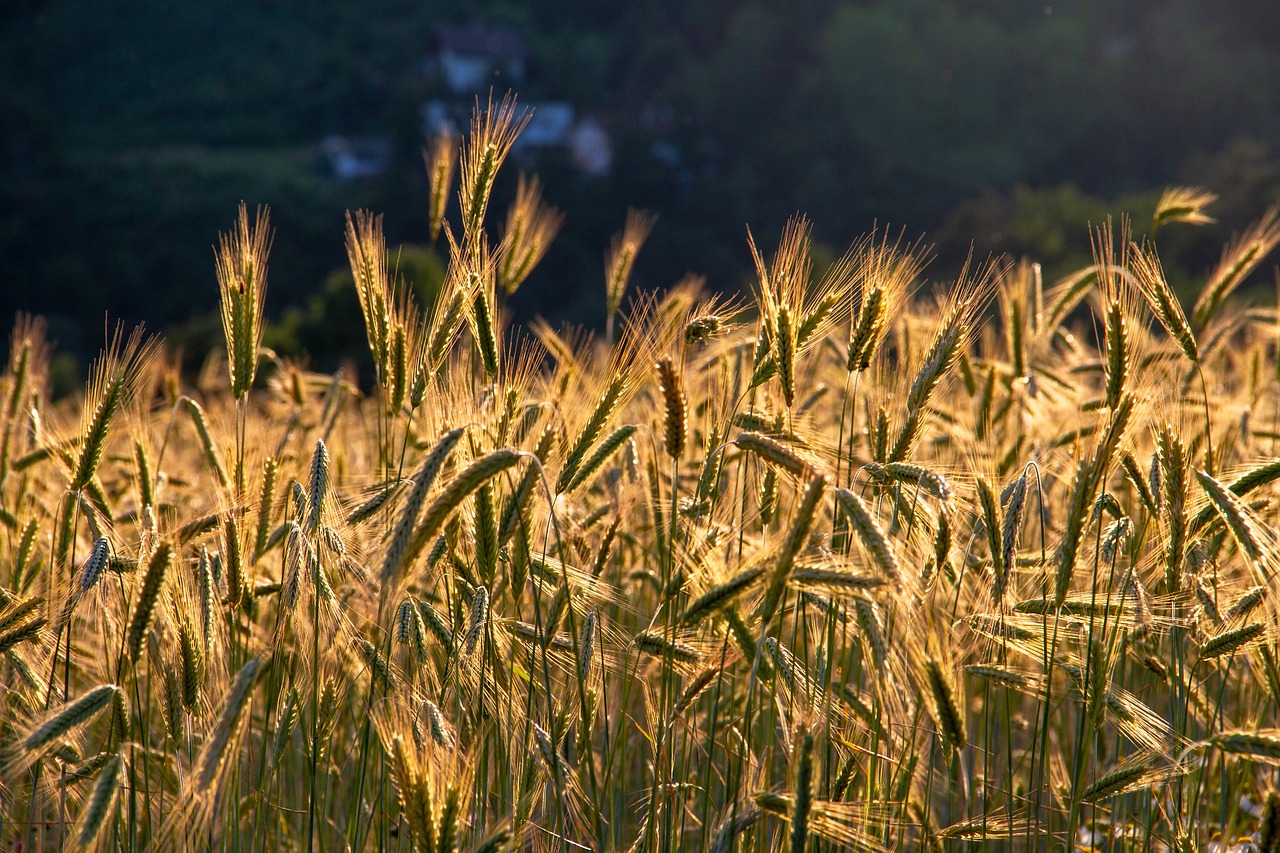
Grasses
When it comes to cover crops, are some of the most valuable allies in the quest for healthy soil. Think of them as the protective blanket that keeps your soil cozy and well-nourished. Grassy cover crops, such as rye and oats, are particularly popular due to their robust growth and ability to thrive in various conditions. These grasses do more than just cover the ground; they play a pivotal role in preventing soil erosion, which can be a significant issue, especially in areas prone to heavy rains or wind. Without this green armor, your precious topsoil could wash away, taking with it the nutrients that your main crops desperately need.
One of the standout features of grassy cover crops is their impressive ability to suppress weeds. By establishing a dense canopy, they block sunlight from reaching pesky weeds, reducing their growth and competition for resources. It’s like having a team of bodyguards for your main crops, ensuring they have the space and nutrients they need to thrive. Furthermore, when these grasses are incorporated into the soil, they contribute to the overall organic matter, enhancing soil structure and improving its ability to retain moisture. This is crucial for maintaining healthy plants during dry spells, as the soil acts like a sponge, holding onto water for longer periods.
Another intriguing aspect of using grasses as cover crops is their adaptability. Farmers can select from a variety of grass species based on their specific soil health goals and local climate conditions. For instance, annual ryegrass is often chosen for its quick germination and ability to grow in cooler temperatures, while oats thrive in slightly warmer conditions. The choice of grass can significantly impact the effectiveness of the cover crop in achieving desired outcomes, such as improved soil fertility or enhanced erosion control.
To illustrate the benefits of different grass cover crops, consider the following table:
| Grass Type | Benefits | Best Conditions |
|---|---|---|
| Annual Ryegrass | Quick growth, excellent erosion control, weed suppression | Cooler temperatures, well-drained soils |
| Oats | Improves soil structure, adds organic matter | Warm conditions, tolerant of various soil types |
| Barley | Suppresses weeds, improves soil health | Cooler climates, well-drained soils |
In summary, incorporating grasses as cover crops can significantly enhance soil health and agricultural productivity. They not only provide essential ground cover to prevent erosion but also improve soil structure and fertility when integrated back into the soil. By carefully selecting the right type of grass for your specific conditions, you can create a thriving ecosystem that supports your main crops and contributes to a more sustainable agricultural practice.
- What are the main benefits of using cover crops? Cover crops improve soil structure, enhance nutrient cycling, reduce erosion, and suppress weeds.
- How do I choose the right cover crop for my farm? Consider factors such as soil type, climate, and your main crops in rotation to select the most compatible cover crop.
- Can I use multiple types of cover crops together? Yes, using a mix of cover crops can provide multiple benefits, such as improved soil health and increased biodiversity.

Best Practices for Cover Crop Management
When it comes to cover crop management, the key to unlocking their full potential lies in implementing effective strategies. Think of cover crops as the unsung heroes of sustainable agriculture; they need the right conditions and care to thrive. One of the most critical aspects is the selection of the right cover crop based on your specific soil health goals and local climate conditions. Each type of cover crop has its unique strengths, and understanding these will help you create a tailored approach that maximizes benefits while minimizing challenges.
Timing is another crucial factor. Planting cover crops at the right moment ensures they have enough time to establish themselves before the main growing season. For instance, if you’re planting a winter cover crop, sowing it in late summer or early fall allows it to grow robustly before the frost sets in. On the flip side, if planted too late, they may not establish adequately, leading to suboptimal benefits. Additionally, the termination of cover crops should be carefully planned. Effective methods such as mowing, rolling, or incorporating them into the soil should be employed to prevent competition with your main crops and to harness the nutrients they provide.
Moreover, understanding your soil type and moisture levels can significantly influence your cover crop management strategy. For example, sandy soils may benefit from deep-rooted cover crops that can help improve soil structure and moisture retention, while clay soils might require different types of cover crops that enhance drainage and aeration. This tailored approach not only boosts soil health but also promotes biodiversity on your farm, leading to healthier ecosystems.
To help visualize the importance of these practices, here’s a simple table outlining the critical elements of cover crop management:
| Best Practices | Description |
|---|---|
| Selection | Choose cover crops based on soil health goals, climate, and main crops. |
| Timing | Plant cover crops at optimal times for establishment and growth. |
| Termination | Use effective methods to terminate cover crops without hindering main crops. |
| Soil Considerations | Assess soil type and moisture to choose the right cover crops. |
In essence, the management of cover crops is not just about planting seeds in the ground; it's about creating a holistic approach that considers the entire ecosystem. By paying attention to these best practices, farmers can enhance productivity, promote sustainability, and ensure that their agricultural practices are as eco-friendly as possible.
1. What are cover crops?
Cover crops are plants grown primarily for the purpose of improving soil health, preventing erosion, and enhancing biodiversity. They are typically planted during the off-season when main crops are not being cultivated.
2. How do cover crops benefit soil health?
Cover crops improve soil health by enhancing soil structure, increasing organic matter, and promoting nutrient cycling. They also prevent erosion and suppress weeds, leading to a more resilient ecosystem.
3. Can I use cover crops in any climate?
While cover crops can be beneficial in various climates, the choice of cover crop species should be tailored to local conditions, including temperature, rainfall, and soil type, to ensure maximum effectiveness.
4. How do I terminate cover crops before planting my main crops?
Termination methods can include mowing, rolling, or incorporating cover crops into the soil. It's essential to choose a method that minimizes competition with your main crops while maximizing the benefits of the cover crops.
5. Are cover crops cost-effective?
While there may be upfront costs associated with planting cover crops, the long-term benefits, including improved soil health, reduced erosion, and enhanced crop yields, often outweigh these initial investments.

Planting Techniques
When it comes to planting cover crops, the techniques you choose can significantly impact their success. Just like a chef carefully selects the right ingredients for a dish, farmers must consider various factors such as soil conditions, crop rotation plans, and desired outcomes. The right planting technique can lead to a thriving cover crop that enhances soil health and fertility.
One of the most common methods is drilling, where seeds are planted directly into the soil using a drill. This technique is particularly effective for small seeds and ensures proper seed-to-soil contact, promoting germination. However, it requires specific equipment and may not be feasible for all farmers. Alternatively, broadcasting involves spreading seeds over the soil surface, which can be done by hand or with a spreader. While this method is simpler and less equipment-intensive, it may require additional steps, such as light tillage or rolling, to ensure seeds make good contact with the soil.
Another important consideration is timing. Planting cover crops at the right time can make all the difference. Ideally, you want to plant them after the main crop is harvested but before winter sets in. This allows the cover crops to establish themselves and take advantage of available moisture and nutrients. However, in warmer climates, you might also consider summer cover crops, which can be planted during the growing season to provide benefits when the main crops are not in the ground.
It's also crucial to consider the depth at which seeds are planted. As a rule of thumb, smaller seeds should be planted shallower than larger ones. For example, legumes like clover should be sown at a depth of about 1/4 inch, while larger seeds like rye can be planted up to an inch deep. This depth ensures that seeds are protected from birds and other pests while still being close enough to the surface to germinate effectively.
In addition to these techniques, soil preparation is key. Before planting, it’s wise to conduct a soil test to assess nutrient levels and pH. This information can guide you in choosing the right cover crop species that will thrive in your specific soil conditions. Afterward, practices like light tillage or no-till farming can be employed to create an ideal seedbed, reduce compaction, and promote better seed-to-soil contact.
Lastly, consider the intercropping method, where cover crops are planted alongside main crops. This approach not only maximizes land use but also provides additional benefits like improved pest control and enhanced biodiversity. It’s like having a buddy system in the garden—helping each other grow stronger!
In summary, the right planting techniques for cover crops can transform your soil health and agricultural productivity. By understanding the various methods available and tailoring them to your specific conditions, you can create a thriving ecosystem that benefits both your crops and the environment.
- What are cover crops? Cover crops are plants grown primarily to improve soil health, prevent erosion, and enhance nutrient cycling.
- When should I plant cover crops? It's best to plant cover crops after harvesting your main crop, ideally in late summer or early fall.
- Can I use cover crops in organic farming? Yes, cover crops are an essential practice in organic farming, as they help maintain soil fertility and suppress weeds naturally.
- How do I terminate cover crops? Common termination methods include mowing, rolling, or incorporating them into the soil before planting the next crop.
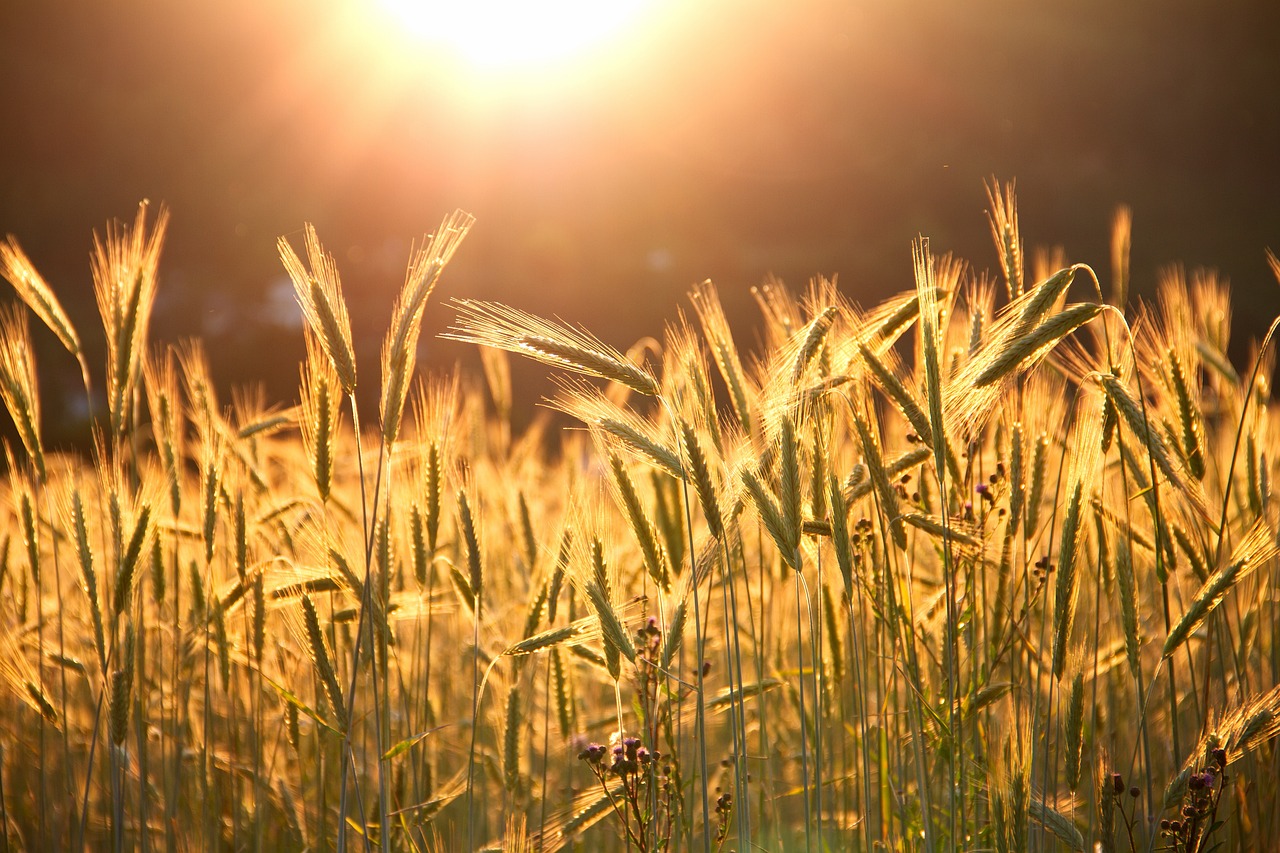
Termination Methods
Effective termination methods are crucial for ensuring that cover crops fulfill their purpose without hindering the growth of main crops. Think of cover crops as a supporting cast in a play; they need to exit the stage gracefully to allow the main performers to shine. There are several techniques that farmers can use to terminate cover crops, each with its own set of advantages and considerations. The right choice often depends on the specific circumstances of the farm, including the types of cover crops used, the main crops in rotation, and the overall management goals.
One popular method is mowing. Mowing involves cutting down the cover crops before they can set seed. This technique not only prevents unwanted seed production but also allows the cut vegetation to decompose and contribute organic matter back to the soil. It's like giving the soil a nutritious snack that helps it thrive. However, timing is key; mowing too early might not allow the cover crops to reach their full potential in terms of biomass, while mowing too late can lead to a loss of nutrients through seed dispersal.
Another effective termination method is rolling. This technique involves using a roller-crimper to flatten the cover crops without cutting them. The flattened plants create a mulch layer that suppresses weeds and retains moisture in the soil. Imagine rolling out a carpet that keeps the weeds at bay while providing a cozy environment for the main crops to grow. Rolling is particularly beneficial for cereal rye and other robust cover crops that can withstand this process. However, it’s essential to ensure that the cover crops are at the right growth stage to maximize the effectiveness of this method.
In some cases, herbicides may be used to terminate cover crops. While this method can be effective and quick, it’s essential to consider the environmental impact. Using herbicides can lead to chemical residues in the soil and water, which can be detrimental to the ecosystem. Therefore, many farmers prefer to use herbicides as a last resort or in conjunction with other methods to balance efficiency and sustainability.
Ultimately, the choice of termination method should align with the overall goals of the farming system. Here’s a quick comparison of the methods:
| Termination Method | Advantages | Considerations |
|---|---|---|
| Mowing | Prevents seed production, adds organic matter | Timing is crucial to maximize biomass |
| Rolling | Suppresses weeds, retains moisture | Requires specific growth stage for effectiveness |
| Herbicides | Quick and effective | Potential environmental impact; use as last resort |
By carefully considering these termination methods, farmers can ensure that their cover crops contribute positively to their soil health and agricultural productivity. It’s all about finding the right balance and timing to make the most of what cover crops have to offer.
- What are cover crops?
Cover crops are plants grown primarily to improve soil health, prevent erosion, and manage weeds, rather than for harvest. - How do cover crops improve soil health?
They enhance soil structure, increase organic matter, and promote beneficial microbial activity. - Can I use cover crops in any climate?
While many cover crops are adaptable, it's important to choose varieties suited to your specific climate and soil conditions. - How long should I keep cover crops before terminating them?
Timing depends on the growth stage of the cover crops and the needs of the main crops; typically, termination occurs a few weeks before planting the main crop.
Frequently Asked Questions
- What are cover crops and why should I use them?
Cover crops are plants grown primarily to improve soil health and sustainability. They provide numerous benefits such as enhancing soil structure, preventing erosion, and promoting biodiversity. By using cover crops, you can reduce the need for synthetic fertilizers and improve the overall productivity of your land.
- What types of cover crops are best for my soil?
The best type of cover crop depends on your specific soil conditions and goals. Common options include legumes like clover and vetch, which fix nitrogen, and grasses like rye and oats that prevent erosion. Consider your local climate and the crops you plan to rotate when making your selection.
- How do legumes benefit my soil?
Leguminous cover crops are fantastic for soil health because they fix nitrogen, enriching the soil naturally. This reduces your reliance on chemical fertilizers. Additionally, they improve soil structure and increase organic matter, which leads to better water retention and healthier crops.
- When is the best time to plant cover crops?
The timing of planting cover crops is crucial for maximizing their benefits. Generally, they should be planted after the main crop is harvested and before the onset of winter. This allows them to establish roots and grow, providing cover and nutrients for the soil.
- What are effective termination methods for cover crops?
To effectively terminate cover crops, methods like mowing, rolling, or incorporating them into the soil can be used. These techniques prevent competition with your main crops and ensure that the benefits of the cover crops are fully realized in the next growing season.
- Can cover crops help with weed suppression?
Absolutely! Cover crops can suppress weeds by providing ground cover that blocks sunlight and outcompetes weeds for resources. This leads to healthier ecosystems and reduces the need for herbicides, making your farming practices more eco-friendly.
- Are there any challenges associated with using cover crops?
While cover crops offer many benefits, they can also present challenges such as managing their growth and ensuring they do not compete with your main crops. Proper planning, including selection and timing, can help mitigate these challenges and maximize the advantages of cover crops.
- How do I choose the right cover crop for my needs?
Choosing the right cover crop involves considering factors like soil type, climate, and the specific goals you want to achieve, such as improving fertility or preventing erosion. Researching local practices and consulting with agricultural experts can also provide valuable insights.







